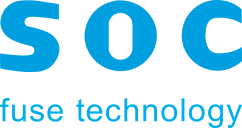The following is an explanation of the markings on fuses and fuse packaging.
PSE Mark
The PSE Mark is based on the Electrical Appliance and Material Safety Law (EAMSL) of Japan. As per the EAMSL, parts of electrical facilities for general use, or machines, appliances, or materials for use in connection thereto, stipulated by the Enforcement Ordinance of the EAMSL, are regulated as electrical appliances and materials.
In regard to fuses, those rated AC 100 V to 300 V and 1 A to 200 A are categorized as electrical appliances and materials according to this ordinance. As a Notifying Supplier for enclosed fuses, SOC notifies the METI of the type classifications, specified in the Enforcement Regulations of the EAMSL, for enclosed fuses that we manufacture in
accordance with the EAMSL.
The fuses SOC manufactures which are rated AC 100 V to 300 V and with rated currents equal to or greater than 1 A (hereinafter called “the relevant fuses”) are categorized as specific electrical appliances and materials per the above ordinance. Unless the relevant fuses satisfy the requirements provided in the EAMSL, they cannot, as a
general rule, be sold in Japan.
One of these requirements is that the relevant fuses must be marked as stipulated in the Enforcement Regulations. In order to bear the markings, the relevant fuses are required to be in compliance with the technical requirements stipulated in the METI Ordinance establishing technical requirements for electrical appliances and materials. Sample
fuses that fall within each type classification as the relevant fuses must be tested by a test house registered with the METI in order to receive at least one valid conformity certificate for each type classification.
SOC applies to the Japan Electrical Safety & Environment Technology Laboratories (JET) for conformity certificates (which are valid for seven years from the date of issue) such that at least one certificate is valid for each type classification of the relevant fuses that SOC sells to the Japanese market.
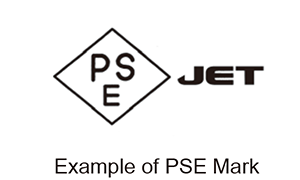
In principle, packing labels for the relevant fuses for the Japanese market are marked with the PSE Mark PSE and JET , the abbreviated name of the Japan Electrical Safety & Environment Technology Laboratories, as well as our trademark “SOC” and the fuse’s electrical ratings. The position of JET is beneath or on the right side of PSE. The relevant fuses themselves are also marked with “SOC,” and if there is sufficient space, with PSE.
Fuses which have been manufactured entirely for export to countries outside of Japan, however, are not marked with PSE JET, nor are their packing boxes.
Caution: Fuses for Use in Japan
When purchasing fuses falling within the following ratings for employment in electrical appliances for use in Japan, make sure the fuses are marked as stipulated in the EAMSL.
Never use fuses in electrical appliances for Japan if they are not marked in this way.
Applicable ratings: AC 100 V–AC 300 V, 1 A–200 A
Certification Marks for North America
The following is an explanation of the markings shown on products, and/or packing boxes, which have received
either UL (Underwriters Laboratories Inc.) or CSA (Canadian Standards Association) product certification services.
UL Listing Mark
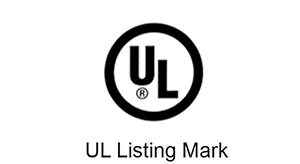
This is a mark based on the UL Listing and Follow-Up Services. UL tests product samples (fuses) to check conformity with the applicable UL standards. After a set of reports are issued by UL, authorization to use the UL Listing Mark is provided based on the conditions listed in the reports.
In order to ensure that all future fuses continue to be in conformance to the requirements described in the reports, UL conducts quarterly on-site inspections and sampling tests as part of their Follow-Up Services.
The standard with which SOC fuses must conform is UL 248-14: Supplemental Fuses. This standard is Part 14 of UL 248 Low-Voltage Fuses, which consists of 20 parts. The UL 248 standards are coordinated among the United States, Canada, and Mexico. The requirements of the UL and CSA standards are the same for Part 14 as listed below:
ANSI / UL 248-14 = CAN / CSA C22.2 No.248.14
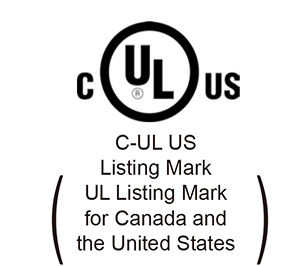
In 1992, the Standards Council of Canada (SCC) granted UL Canadian Certification Organization and Testing Organization status providing services for Canada. This enabled UL to begin conducting tests and issuing certifications for Canada.
Several years ago, SOC began requesting certifications for both Canada and the USA when we apply for Listing Services for a new product. As the requirements of both the UL and CSA standards are the same, use of the C-UL US Listing Mark is accepted in the issued reports without the need for additional testing, with a description stating that, in addition to UL 248-14, the requirements of CSA C22.2 No. 248.14 have also been evaluated.
When space permits, the UL Listing Mark is marked on our applicable fuses. For cartridge fuses, the mark is die-stamped on the side of one of the end-caps. Along with either the UL Listing Mark or the C-UL Listing Mark, “Listed,” “360C” (the control number assigned to SOC), and the product identity (“SUPPLEMENTAL FUSE,” “MISCELLANEOUS FUSE,” “MINIATURE FUSE,” or “MICRO-FUSE”) are also printed on the packing box.
UL Recognized Component Mark
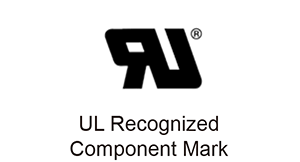
This mark is based on the UL Component Recognition and Follow-Up Services. In the same way as the UL Listing and Follow-Up Service, UL tests product samples (either fuses or fuseholders) in order to issue a set of reports and authorize the use of the UL Recognized Component Mark under the conditions specified in the reports. Additionally, in order to confirm that the fuses produced afterward continue to be in conformance with the requirements described in the reports, UL conducts quarterly onsite inspections and sampling tests as part of their Follow-Up Services.
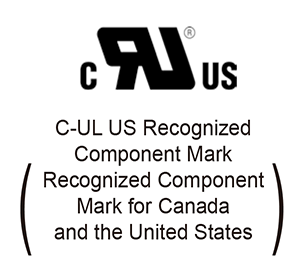
Although the Listing Service requires that the fuses conform to the UL standard, the Component Recognition Service does not necessarily require this as it is possible to change a portion of the UL standard requirements. For example, although 5 x 20 mm cartridge fuses based on IEC 60127-2 do not meet the time-current characteristics of the UL standards, SOC can apply for the Component Recognition Service for these fuses according to the characteristics and breaking capacities stipulated by the IEC standard. Applications for this service can also be made for fuses having only the DC rating. SOC applies for these services for some of our fuseholders as well.
Recognized Components which have undergone the Component Recognition and Follow-Up Services are components that are used in equipment. UL evaluates whether the fuse or fuseholder is appropriate for use in the end-equipment, and if it is a fuse, whether the fuse can appropriately protect the equipment.
As with the Listing and Follow-Up Services, when certification for both the USA and Canada is applied for under the Component Recognition and Follow-Up Services, use of the C-UL US Recognized Component Mark is permitted.
In most cases, we mark the Recognized Component Mark or the C-UL US Recognized Component Mark on the packing box instead of on the product itself.
CSA Mark
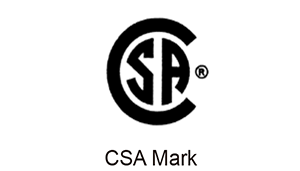
This mark is based on the CSA Certification Service, which is essentially the same as the UL Listing and Follow-Up Services. Use of this mark is authorized under the conditions stated in the reports issued under this service. On-site inspections and sampling tests are conducted during factory audits.
When space permits, this mark is placed on our fuses. For cartridge fuses, the mark is die-stamped on the side of one of the end-caps. This mark is also printed on our packing boxes.
CSA Component Acceptance Mark
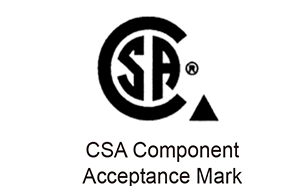
This mark is based on the CSA Component Acceptance Service, which is fundamentally the same as the UL Component Recognition and Follow-Up Services. For the CSA Component Acceptance Mark, a triangle is added to the CSA Mark. On-site inspections and sampling tests are conducted during factory audits for this mark as well.
SOC prints the CSA Component Acceptance Mark on the packing box instead of on the product itself.
Certification Marks for Europe
S Mark
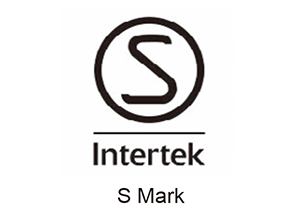
This mark is based on the certification service provided by Intertek Semko AB (SEMKO).
SEMKO tests product samples in accordance with the requirements of the applicable EN standards, and issues certificates and permits use of the S Mark for products which can be confirmed as meeting the requirements.
When SEMKO considers that a product conforms to the minimum safety requirements, usage of the S Mark is permitted for the product tested under the conditions modified from EN standards after the issuance of a certificate.
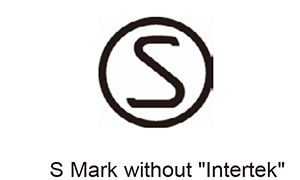
Unlike UL or CSA, the same S Mark is permitted to be used for products which satisfy the minimum safety requirements regardless of conformity to the EN standard.
The S Mark is indicated on the packing box for our fuses which have received this certification. For marking on the fuse itself, however, use of the S mark without “Intertek” is accepted due to the limited space on the fuse.
Kitemark
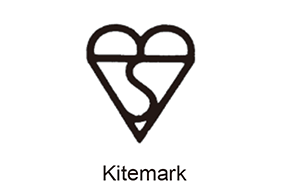
This certification mark is based on the Kitemark Licence issued by the British Standards Institution (BSI). BSI issues the Kitemark Licence in those cases where product samples are confirmed by testing to meet the relevant British Standards, and additionally where the quality system for its production conforms to BS EN ISO 9001. BSI grants the right to use the Kitemark based on the Kitemark Licence. Twice yearly on-site inspections and sampling tests are conducted for continued use of the mark. For those cartridge fuses which have received the Kitemark Licence, the Kitemark is marked on the side of one of the end-caps.
Quality System
SOC has obtained certification of our quality management system for designing and manufacturing fuses.
| Location | Certification agency | Certification |
|---|---|---|
| Tochigi Factory | DNV*1 | Standard ISO 9001: 2015 |
| DNV*2 | Standard IATF 16949: 2016 (only for vehicles) | |
| Akita Factory | BSI*3 | Standard ISO 9001: 2015 |
*1 DNV GL Business Assurance UK Limited
*2 DNV-GL Business Assurance USA, Inc.
*3 British Standards Institution
